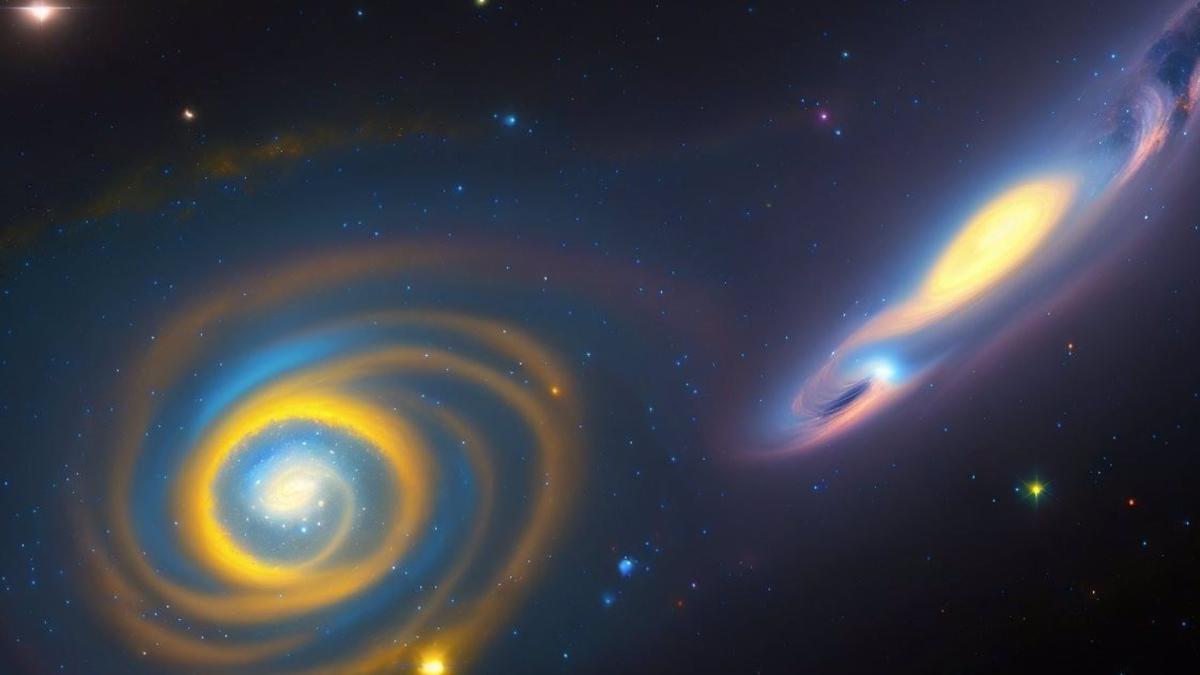According to a study published in the Astrophysical Journal, a team of astronomers has discovered the first “galactic bubble” that dates back nearly 140,000 years to the dawn of the universe.
It should be imagined as a structure 1,000 million light-years in diameter, about 10,000 times larger than our own galaxy.
Located in what astronomers call the nearby universe, about 820 million light-years from the Milky Way, it is like a “spherical shell with a heart,” the French researcher, astrophysicist and co-author of the study, explained to AFP. This week.
The heart of this shell is the Bouvier supercluster of galaxies, which is surrounded by a large void and surrounded by other superclusters and interstellar filaments, such as the Sloan large wall.
According to Pomeratz, the discovery is part of a “longer scientific process” because it confirms a phenomenon described in 1970 by American cosmologist and future Nobel laureate in physics Jim Peebles.
The scientist explains that in a primordial universe composed of particles and a plasma of light, the processes involved produced sound waves. These vibrations create a kind of bubble within the plasma with the material at the core.
This process was interrupted about 380,000 years after the Big Bang, “freezing” the shape of these bubbles. Then they grow as the universe expands, like “fossils” of those times.
This phenomenon, known as Baryon Acoustic Oscillations (BAO), had indirect evidence of its existence in 2005 from statistical analyzes of galaxy catalogs.
“unexpected”
Until discovered by Ho’oleilana, meaning “awakening murmurs” from a Hawaiian creation song.
The term is associated with the study’s first author, Richard Brent Tully, an American scientist at the Honolulu Institute for Astronomy.
Tully already, along with Pomarède, in 2014 found that Laniakea, the “big sky” galaxy supercluster in Hawaii, contains about 100,000 galaxies, including our own Milky Way.
The discovery of Holilana happened by chance through Tully’s studies of new constellations.
“It’s unexpected,” says Pomaret, who was studying a map of this part of the sky, “it’s a ‘terra incognita’ for us.”
The two researchers contacted Cullen Howlett, a young Australian cosmologist from the University of Brisbane.
This third author of the study, an expert in the analysis of BAO and large galaxy catalogs, “mathematically determined the globular structure that best fits the data provided.”
This allowed us to visualize Holilana’s shape and the position of the galactic archipelagos that make it up in three dimensions.
Pomarède points out that this work, the value of the Hubble constant, contributes to an important topic in cosmology. This allows us to calculate the expansion stages of the universe, which looks at how galaxies are moving away from each other, and how a bubble like Holilana continues to grow.
Discoveries of other bubbles are just beginning, thanks to instruments launched in July by the European Euclid Space Telescope to help understand the universe’s expansion. Or the next big South African SKA radio telescope, says Pomaret, “to observe the universe in the southern part of our galaxy.”




:quality(85)/cloudfront-us-east-1.images.arcpublishing.com/infobae/XMMRFEI2OVHFLBEOD3SJKHOKJY.png)
